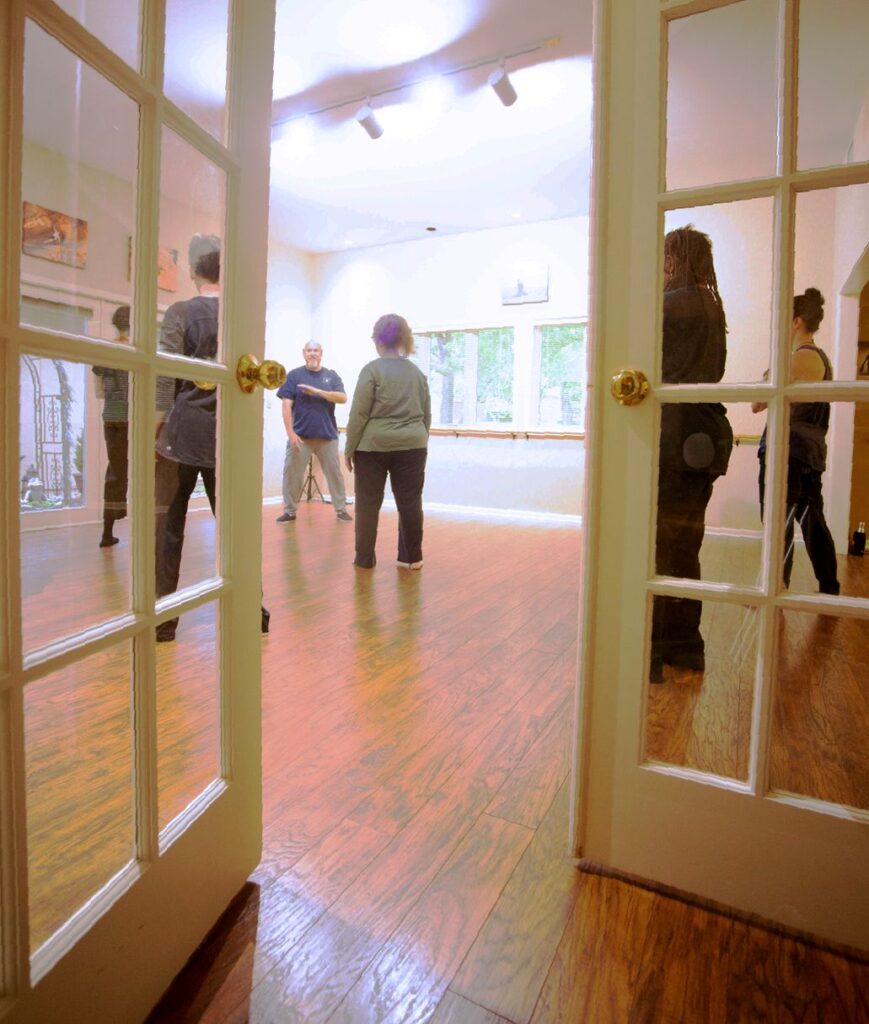Unlike most exercise or Qigong, the T’ai Chi Ch’uan form is a sequence of connecting movements. It is critical to attend class on a regular basis while learning the form.
First Section beginner classes teach the foundational movements and concepts of Tai Chi. They also benefit students who need to solidify their comfort with the beginning postures. The classes teach postures and movements of the First Section of the Cheng Man-Ch’ing Yang-style form, fundamental Tai Chi principles and energies, and basic application concepts. Classes are twice weekly, one hour each. Click for the current schedule.
T’ai Chi can be physically challenging, requiring development of balance and movement that is different than usual day to day activities. Students frequently repeat the First Section until the postures become familiar and natural before moving to the Second Section.
Each class is a lesson where new information is imparted. Consistent daily practice is where progress occurs. If you miss a class, come early to the next class to get instruction.
Middle Section intermediate classes add thirteen more postures from Cross Hands up to Works at Shuttles. There is deeper exploration of Tai Chi principles. This section is taught in nine one hour classes over six weeks. Click for the current schedule.
Last Section advanced classes cover the final eight postures in the form. While this section contains less individual postures, it has many repeated movements. Therefore, the Final Third is also taught in nine one hour classes over six weeks. When complete, students will have learned the entire Yang Style Short Form. Click for the current schedule.
It is important to adopt a patient and consistent attitude towards T’ai Chi Ch’uan studies. Everyone progresses at a different rate, but consistent practice yields the best results. Many students repeat Sections once or more. It is far more critical to develop a deep foundation than to try and rise quickly through levels of study.
“Gradually, gradually.” – Professor Cheng
Form Review offers corrections and more deeply explores the postures, movements, and principles of the form. Form Review deepens understanding of the postures, their energies, and their applications. Increased external and internal organization leads to improved health and energy flow.
Advanced Studies help develop a complete understanding of T’ai Chi Ch’uan. Here we engage in direction, correction, and exploration. Studies include form in flow, holding postures, standing meditation, and Tui Shou, or “push hands”. More on Tui Shou classes.
Learning the complete form by no means concludes your journey in T’ai Chi Ch’uan studies. It is an achievement, but only the first step. “The journey of a thousand miles begins from beneath your feet.” – Lao-tzu, from the Tao Te Ching
There are 5 sessions of classes: Winter (late Jan-Mar), Spring (Apr-May), Summer (Jun-Jul, not a full session), Late Summer (late Aug-Oct), and Fall (late Oct-mid Dec).
Click here for the entire Schedule.
Weapons forms such as Jian Sword, Saber, and Cane are areas of study available only for students who demonstrate achievement in the postures and principles of Tai Chi.
Private instruction is available on a limited basis. Contact Andy for details.
Events or workshops will be announced when scheduled. Andy is the coordinator for periodic Tai Chi Silent Retreats. Details are on the Events page.
Class costs may vary slightly, depending on how many classes are in a session.
If you have any existing medical conditions, Tai Chi KC strongly recommends that you consult with your physician before beginning any exercise program, including T’ai Chi Ch’uan. You should be in good physical condition and be able to participate in the exercise.
